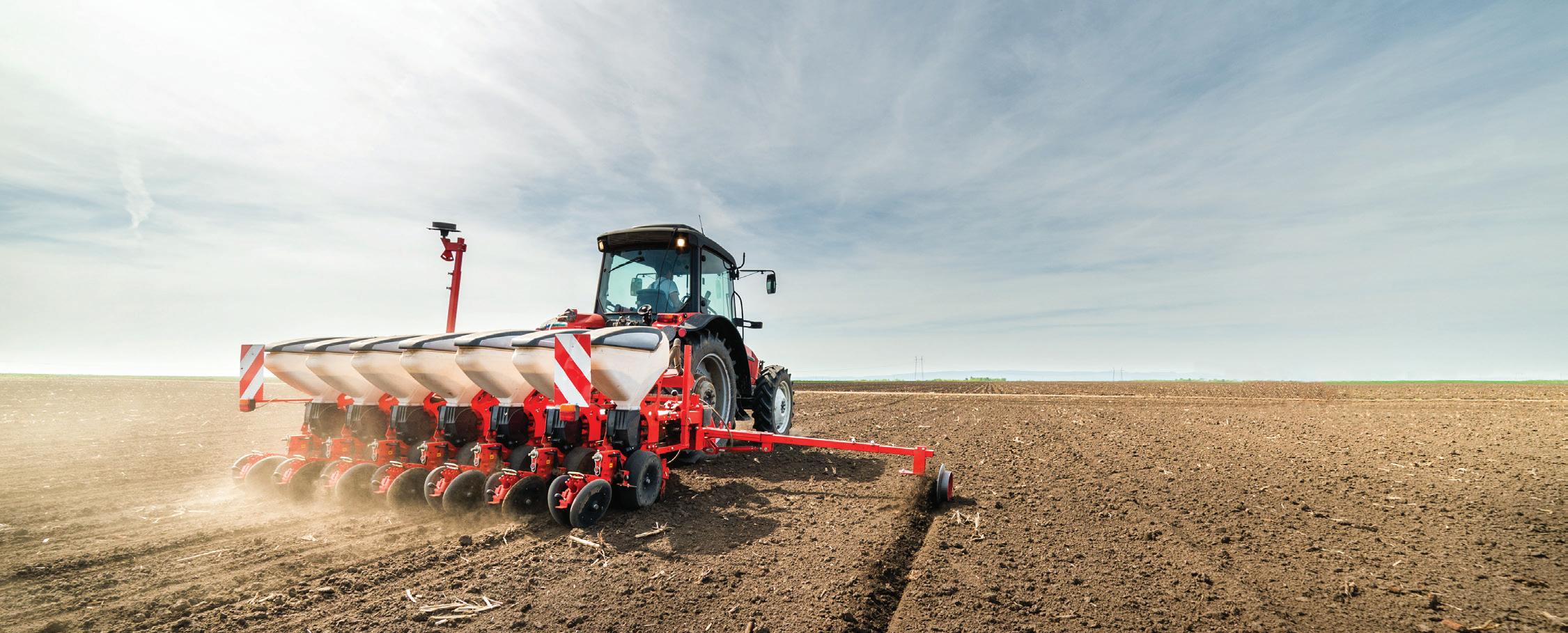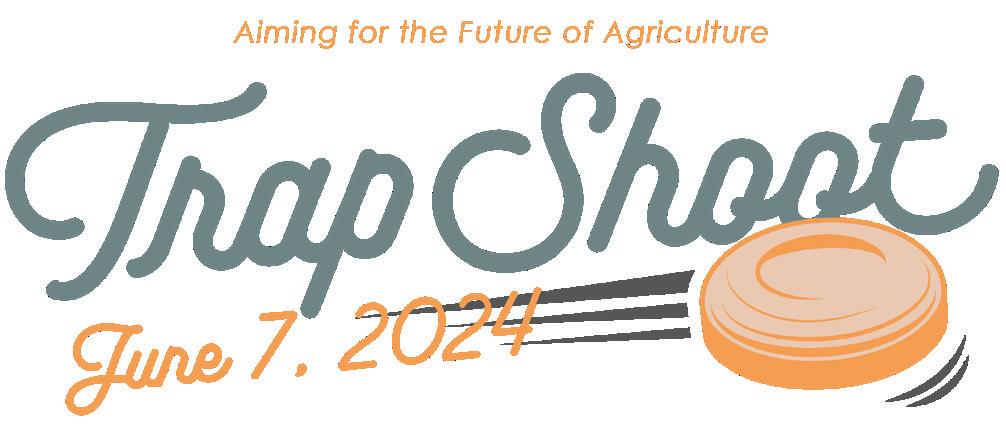Farm Bureau Press

NEW INFORMATION REGARDING PATHOGENIC AVIAN INFLUENZA (HPAI) RELEASED
USDA Animal and Plant Health Inspection Service (APHIS) confirmed March 29 that dairy herds in New Mexico, Idaho, and Michigan have now tested positive for Highly Pathogenic Avian Influenza (HPAI). These are in addition to the previously confirmed cases in Texas and Kansas. Officials believe that in the case of the Michigan outbreak the virus was spread by cattle that were transported from infected herds in Texas and has spread from cow to cow. There are still no cases of cattle dying from HPAI and the main symptoms that have been reported are decreased feed intake, fever, decrease in lactations, and thick unusual milk, all lasting anywhere from a few days to two weeks. Milk from infected animals is being dumped and not entering the supply chain. However, it is confirmed that pasteurization kills any HPAI that may be in the milk.
On April 1, the CDC confirmed that a dairy farm worker in Texas had contracted HPAI through direct contact with infected dairy cattle. The only symptoms that he is showing are irritated eyes. This case does confirm that
Continued on page 2

ArFB Foundation Annual Trap Shoot, Page 3

APRIL 5, 2024 | VOLUME 27 | ISSUE 6 A PUBLICATION OF THE ARKANSAS FARM BUREAU FEDERATION
A PEEK INSIDE
Market News, Page 4
Scan the QR code to access direct links referenced in each article. GET THE LINKS FOLLOW US ONLINE
Aiming for the Future of Agriculture



Delegation Visits | ArFB recently welcomed three members of Arkansas’ Congressional Delegation to the state office. Rep. Westerman joined the Arkansas AgCast for an interview, which will be posted on ArFB’s social media channels in the coming weeks. Rep. Crawford and Sen. Boozman also joined the AgCast and met with members of the state board of directors.
UPDATED HPAI INFORMATION
Continued from page 1
not only is this strain of HPAI transmissible from birds to mammals and cattle to cattle, but also from cattle to humans.
The Arkansas Department of Agriculture hosted a zoom call with Arkansas dairy producers and Farm Bureau on April 2 to discuss the outbreaks and measures that are being taken by the state. It was announced that there will be a travel restriction implemented preventing dairy cattle from states with confirmed cases of bovine HPAI from entering Arkansas. This measure is being put in place to ensure contaminated animals do not enter the state. The department is taking measures to be prepared for testing should a suspected outbreak occur.
Officials are encouraging both dairy and beef cattle producers who also have poultry flocks to follow strict biosecurity practices on their operations. At this time, it is not confirmed, but suspected, that the virus can be transmitted from cattle back to poultry flocks. Recommended practices for poultry producers who also have cattle include:
• Restricting access by limiting entry to the farm to only authorized personnel;
• Maintaining cleanliness by changing clothes between operations and regularly disinfecting footwear;
• Cleaning and disinfection of your facilities and equipment.
Vehicles can play a role in the spread of HPAI, therefore, it’s important to clean and disinfect vehicle tires and equipment before entering the farm. When possible, cover and enclose outdoor feeding areas to prevent contamination by wild birds. Finally, don’t use water from exposed water sources like ponds, to water your poultry houses without treating it first. Many times, wild birds will land on these sources contaminating them and then by using that water in the poultry houses, the disease is being spread.
There are still no confirmed cases of Bovine HPAI in Arkansas, however, if you suspect you may have infected animals you can contact the Arkansas Department of Agriculture and request to speak with Dr. John Nilz, (501) 297-2250, or Dr. Joshua Moffett, (501) 515-4796.
Additionally, if you believe someone may have contracted HPAI from animal contact, you can reach out to Dr. Laura Rothfeldt at the Arkansas Department of Health, (501) 280-4136.
2 A PUBLICATION OF THE ARKANSAS FARM BUREAU FEDERATION
ArFB FOUNDATION
EDUCATIONAL GRANT PROGRAM
The Arkansas Farm Bureau Foundation has introduced an educational grant program. The program is designed to provide educational grants for the educational programs and activities that are offered and developed through the ArFB Education Department and Arkansas Ag in the Classroom. The grants will be for a particular program or activity and will include all materials and necessary items for the program or activity to be carried out, no money will be awarded. The first grant offered through this program is the Educational Book Barn Grant. This grant will provide an assembled tabletop book barn, 12 accurate ag books, bookmarks, Ag Readers, a list of additional accurate ag books and a list of additional resources. These grants are open to County Farm Bureaus, Women’s Leadership Committees and Young Farmer and Rancher Committees.
These book barns can be used in schools, public libraries, for special events, or in the county Farm Bureau office. The application period will close at midnight on April 12.
A total of 20 grants will be available and will be awarded on a first come, first served basis. Grant recipients will be notified by April 19 with materials available for delivery or pickup by April 26.
A short program report detailing the use of the grant materials, including pictures/videos (if possible), will be due by Sept. 13.
The application can be found here. Any questions regarding the ArFB Foundation Educational Book Barn Grant should be directed to Amanda Williams by email at amanda.williams@ arfb.com or at 501-228-1493.

A r FB FOUNDATION ANNUAL TRAP SHOOT
The Arkansas Farm Bureau Foundation will be hosting its annual trap shoot June 7 at the Arkansas Game & Fish Foundation Shooting Sports Complex in Jacksonville.
The ArFB Foundation is “Aiming for the Future of Agriculture” by teaming up with the Arkansas 4-H Foundation and the Arkansas FFA Foundation. Half of the net proceeds from this year’s shoot will benefit the Arkansas 4-H and Arkansas FFA Foundations, while continuing to support the goals of the ArFB Foundation.
The event is $500 for a 5-man team and includes awards for youth & adult divisions, a top shooter award and door prizes.
There are several options for individuals or county Farm Bureaus to show support for these organizations including sponsorship of a local youth shooting team. or a forming county team. The deadline to register is May 23.
There are also several options for those wanting to support these organizations, including:
• Event Sponsor:
• Gold Level: $300 – Unlimited Availability
• Silver Level: $200 – Unlimited Availability
• Bronze Level: $150 – Unlimited Availability
• Shooting Field: $450 – 12 Available
• Booth: $50 – Limited Availability
For more information on all sponsorship opportunities, please visit the ArFB Foundation section of the Arkansas Farm Bureau website for registration options and additional forms.
For questions, contact Amanda Williams by email at amanda.williams@arfb.com or at 501-2281493.

3 A PUBLICATION OF THE ARKANSAS FARM BUREAU FEDERATION
MARKET NEWS
as of April 3, 2024
Contact
Brandy Carroll brandy.carroll@arfb.com
Tyler Oxner tyler.oxner@arfb.com
Rice
USDA released the first 2024 surveybased crop estimates last week. It came as no surprise to the market that rice farmers intend to plant 2.932 million acres of rice, up 1% from the previous year and 11% from the previous 5-year average. Arkansas farmers reported intentions to plant 1.451 million acres, up 1% from last year and 14% from the 5-year average. The report came in below the average trade guess, but a warm, dry spring could result in a bigger crop. This week marked the first crop progress report of the season, which showed 12% of the rice crop already in the ground. Most of that is in Louisiana and Texas, but Arkansas farmers are also in the field with 3% of the crop planted. Old-crop May futures are trending solidly lower and have fallen to a new 8-month low. Disappointing weekly exports of only 62,100 metric tons added pressure. New-crop September, on the other hand, is trading solidly sideways, between support at $14.25 and resistance near $14.65.
Cotton
Cotton farmers reported to USDA their intentions to plant 10.673 million acres this year. That’s down 13% from the 5-year average, but up 4% from last year. It’s also up from the National Cotton Council survey that was open during January and reported in February, that showed intentions for 9.8 million acres. Cotton trended sharply higher, however, early in the year, convincing some farmers to change their minds and plant more cotton. New-crop
December cotton is trading in a mostly sideways pattern now, having been capped by resistance at 85 cents, which caused the rally to run out of steam. The first level of support is at 83 cents.
Corn
Following last week’s positive USDA data, corn prices have reversed those gains. Dec 24 corn closed below its 50-day moving average support at $4.69, but remained above last week’s lows. According to the USDA’s Crop Progress report released on Monday, U.S. corn plantings are currently at 2% completed, matching last year’s progress and surpassing the 1% completed 5-year average. In Arkansas, corn planting progress stands at 4%, up from 2% last year and the 5-year average. However, corn prices seem to be restrained by ample supplies in the U.S. and expectations of significant stocks remaining. Favorable weather conditions in Brazil are also limiting gains this week. Additionally, a report from Beijing suggests that China’s efforts to reduce reliance on foreign grain may intensify this year, as local crop production can more affordably sustain a smaller livestock herd.
Soybeans
Soybean prices started the week slightly in the red, particularly for new crop soybeans (Nov24), although they have managed to maintain trading above the 50-day moving average. Mid-week, there was some bullish support for the soy complex due to sluggish planting prospects in the U.S., but this was counteracted by the rapid pace of Brazilian exports and a strong dollar, which diminishes the appeal of U.S. soybeans on the global market. Additionally, resistance to soybean futures is coming from factors such as U.S. supply levels and lower demand from China for U.S. soybeans. Moreover, resistance is being observed due to rainfall in the U.S. Midwest and favorable weather conditions in South America.
Wheat
Nearby wheat prices (May24) are trading with a mix of upward momentum as forecasts point to drier conditions in certain areas of the U.S., as well as some weather concerns in Europe and the Black Sea wheat regions. Recent tenders issued by Jordan and Tunisia on Tuesday night suggest that international buyers are keen on making fresh purchases, particularly as prices hover near multi-year lows due to ample global wheat supplies. However, prices remain constrained by consistent Russian export loading rates in the Black Sea region and sluggish U.S. export activity. The significant purchase by Saudi Arabia reported on Monday, coupled with the anticipated absence of India from the global wheat market in the upcoming 2024/25 marketing year, is bolstering early-week gains, primarily driven by cash market activity.
Cattle
Cattle futures are showing signs of topping. June has established resistance above $186 and is now moving lower. The market charged a huge bearish reversal on Monday, suggesting that further losses are possible. Boxed beef prices are declining and the cash cattle markets have been quiet this week. Packer margins are estimated to be in the red, adding additional pressure to futures.
Hogs
June hogs charted a bullish reversal on Monday, moving prices to a new 14-month high. Packer demand and strong wholesale pork prices remain supportive. A seasonal reduction in slaughter totals could hamper the upward momentum if realized. EDITOR
4 A PUBLICATION OF THE ARKANSAS FARM BUREAU FEDERATION
Wallace ashley.wallace@arfb.com
Ashley








